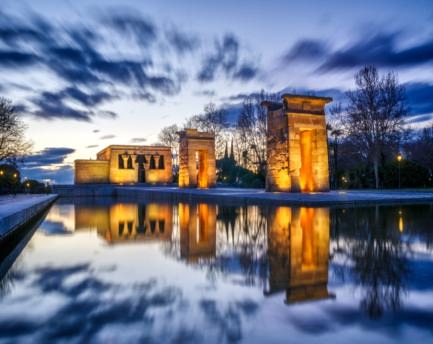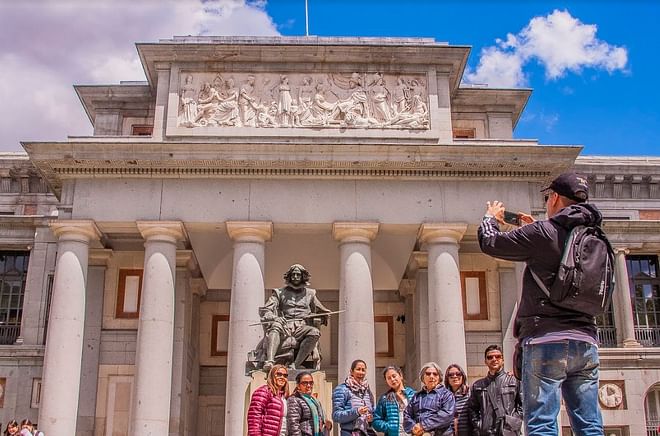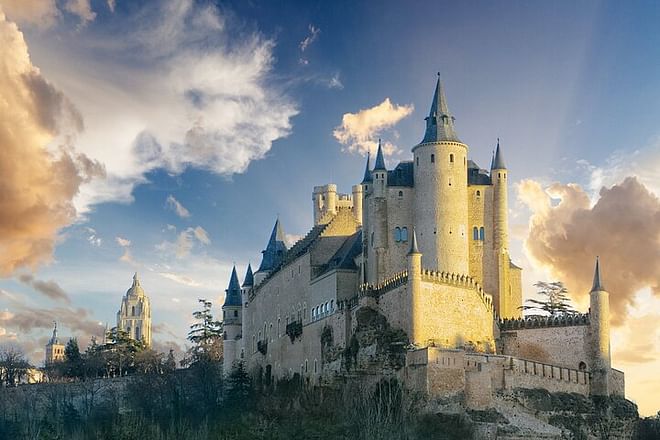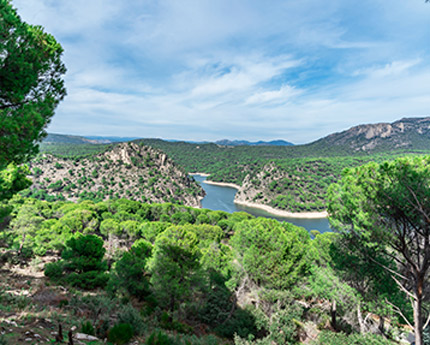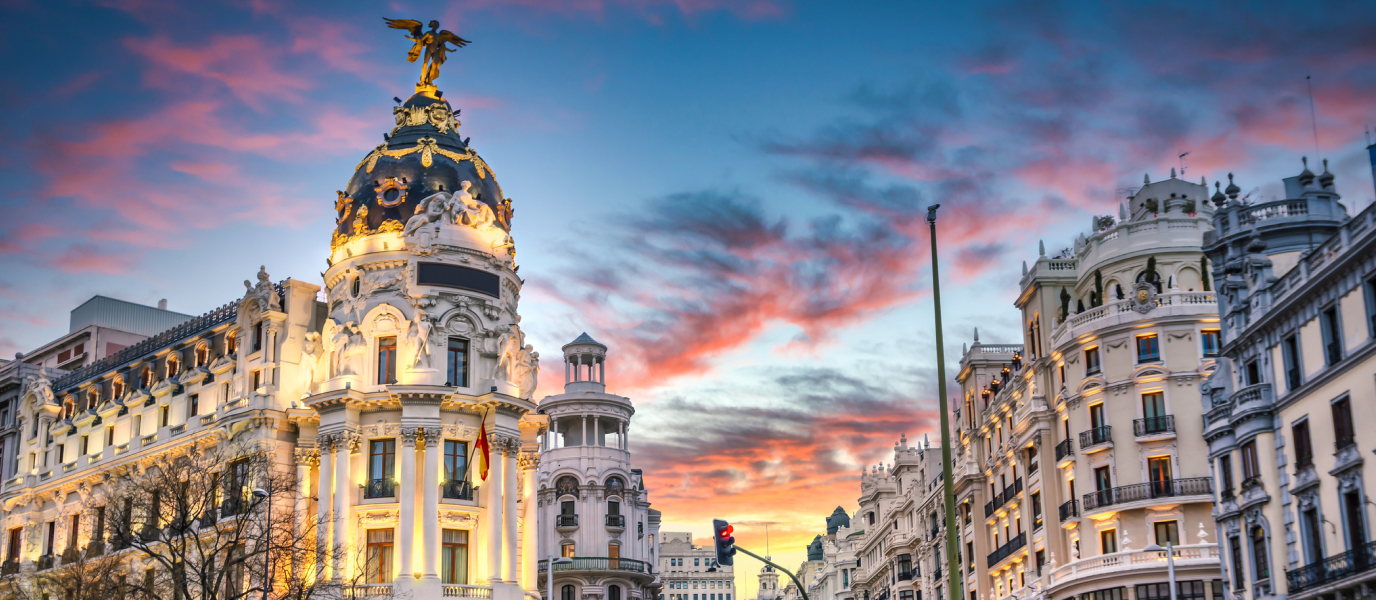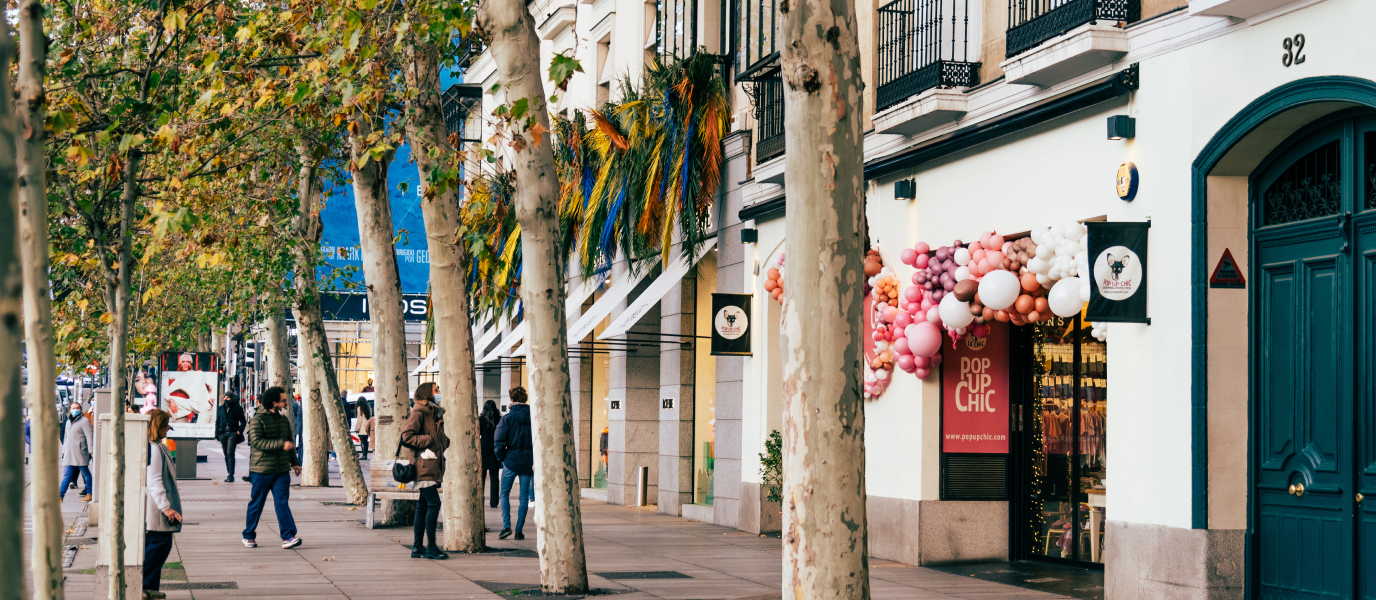At the southern end of the Parque del Oeste, on the Montaña de Príncipe Pío, stands an elegant structure that is somewhat disorientating for visitors, because it is redolent of other parts of the world. This is the Templo de Debod, a 2,200-year-old Egyptian temple which the government of Egypt presented to Spain in 1968. And how did such a monument end up here? Back then, Egypt was building the Aswan dam, a mega construction project which was about to result in the flooding of the ancient temples of Nubia. To prevent the destruction of these treasures by the waters of the Nile, UNESCO put out an appeal to save them. Only Spain and three other countries responded. In a gesture of gratitude, the Egyptian Government donated four of those temples: Debod went to Spain, Dendur to the United States, Ellesiya to Italy, and Taffa to the Netherlands.
Over a period of two years, the building was reconstructed stone by stone in its original east-west orientation, and was opened to the public on 20 July 1972. Ever since, it has lent a mystical air to this hilltop which is only a stone’s throw away from the Plaza de España, offering one of the most romantic sunsets in Madrid. In 2008 the temple was declared an Asset of Cultural Interest.
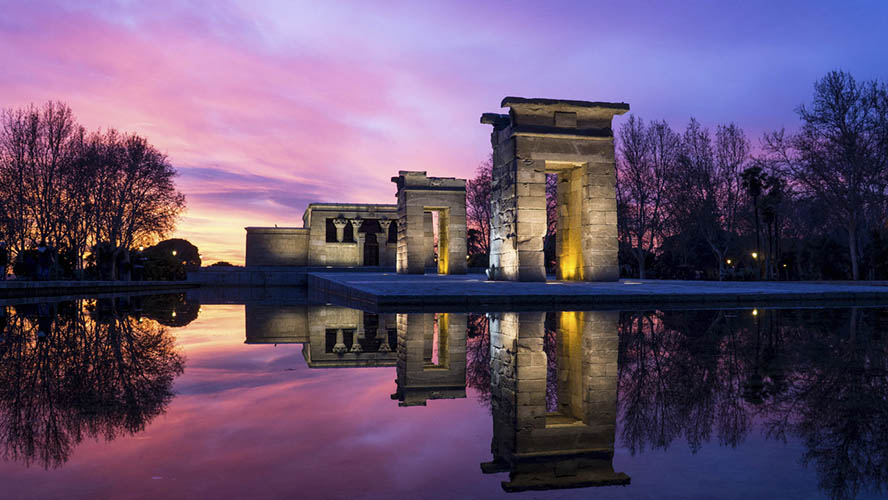
Related experiences
A place full of Egyptian (and Madrid) history
The construction of this genuinely pharaonic work—unlike some undertaken by certain modern mayors—dates back to the second century B.C. when King Adikhalamani of Meroe ordered the building of a temple to the gods Amun and Isis. Inside the temple, the reliefs dedicated to the worship of these two deities can still be seen today. Later, the kings of the Ptolemaic dynasty built new rooms around the central core, although the temple was actually completed by the Roman emperors Augustus and Hadrian who, following the annexation of Egypt by the Roman Empire, added the final decorative details and added an extension. After the arrival of Christianity in the Nubia region in sixth century, the temple was closed up and abandoned… until 1972, when it once again filled with life, thanks to the presence of hundreds of Madrid residents curious to find out what it was.
Thus, the Templo de Debod came to occupy a site that already held a long and strange history in Madrid. Because on this same spot stood—until it was destroyed during Spain’s Civil War—the Cuartel de la Montaña (Mountain Barracks), the seat of the (failed) 1936 revolt in the capital. The summit of the Montaña de Príncipe Pío was also the scene of an infamous and tragic event portrayed by Francisco de Goya: the 2nd May executions by firing squad, when the French troops led by Napoleon shot the leaders of the 1808 uprising against the invaders.
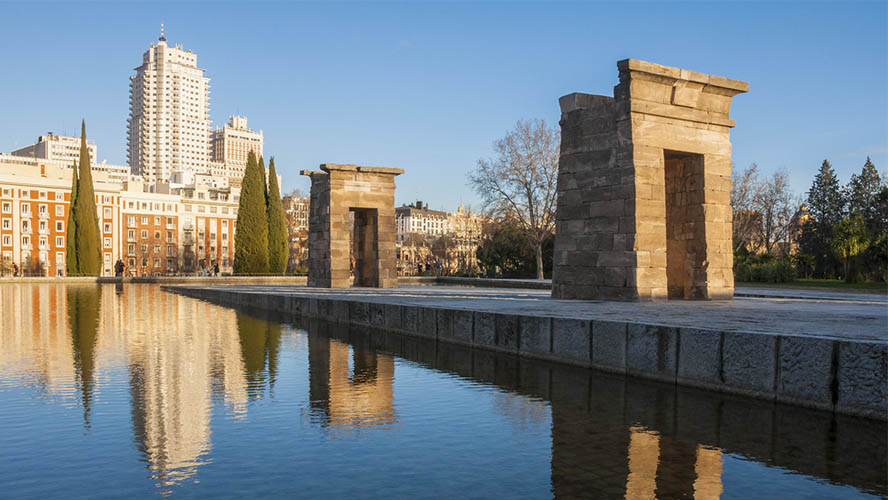
What to see at the Templo de Debod
The Templo de Debod is open to the public, and offers free tours of its various rooms: the Vestíbulo de Augusto [Augustus Vestibule], the Capilla de Adijalamani [Adikhalamani Chapel], the Vestíbulo del Naos [Naos Vestibule or inner sanctum], and the Audiovisual Room. Inside, apart from admiring the above-mentioned reliefs, visitors can find out more about the temple by means of videos and audiovisual films projected onto the walls. There is also an interesting scale model that shows the original setting of the Temple of Debod and others near the River Nile, in the Abu Simbel area of the region of Nubia.
The temple’s beautiful present-day location provides a wonderful setting for visitors to enjoy a pleasant stroll in the surrounding area. It is surrounded by water and gardens, so it is a favourite area for Madrid’s inhabitants to enjoy a picnic, practise yoga or lounge around on the lawns. The best time to visit is in the evening, when the setting sun bathes the edifice’s silhouette in a twilight that, just for a moment, transports the imagination back to the time of the Pharaohs.




































































